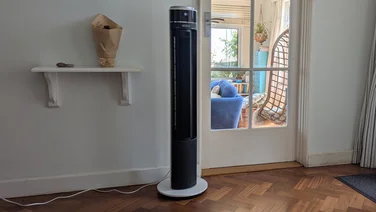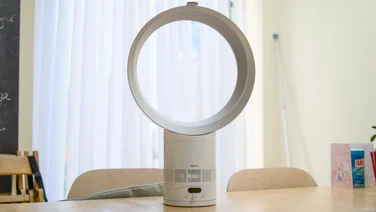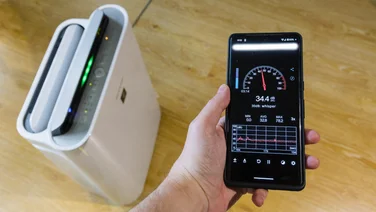To help us provide you with free impartial advice, we may earn a commission if you buy through links on our site. Learn more

Certain rooms in our homes are more prone to mould and dampness than others. And this can be especially true as temperatures start to dip in the autumn and winter.
Mould isn’t just unsightly; it can also affect the health of you and your loved ones. According to the NHS, those with respiratory conditions, people with a weakened immune system, the elderly and young children are especially at risk from the effects of mould.
Mould can cause coughing, wheezing and breathlessness, and because of this, it can even trigger asthma attacks. Coming into contact with mould can also result in skin rashes, red eyes, sneezing and a runny nose. But what causes mould on walls in the first place?
As we briefly mentioned, the colder months of the year can be when you start to notice or smell the musty scent of mould in your home. But why is this? Well, it’s actually the change in temperature in our homes that allows fungus to grow and flourish; this fungus is what we generally refer to as mould.
READ NEXT: Best dehumidifiers for drying clothes
Excess moisture and condensation
Even though you may not realise it, every room in your home naturally has moisture in the air. But when there’s excess moisture, it becomes somewhat problematic – for example, when steam and condensation are produced by cooking, showering or drying your clothes indoors.When this excess moisture comes into contact with a cold surface, such as a window or ceiling, water drops accumulate and create dampness. And it’s this damp environment in which mould thrives. Without proper ventilation or the use of a dehumidifier to dissipate the additional moisture, the mould grows and spreads. So, if you’ve spotted mould on your shower wall or another area in your home, this could be why.
Water leaks
There are a few more pressing issues that could be causing mould to appear on your walls. Leaky pipes, rain seeping through a compromised roof or rising dampness in basements and ground floors can all create and cultivate the damp environment that mould loves.

If the mould is more apparent after heavy rainfall, it suggests that water is seeping in from somewhere and leaving the wall or other surfaces damp. If you think this might be the case, you’ll need to investigate, potentially call out a contractor or try out some DIY to fix the leak and stop mould from appearing in the future. The same can be said for a leaky pipe. If you stop the leak, you should, in turn, prevent the mould from returning after you’ve removed it.
Regardless of the cause, it’s essential to keep on top of mould when you first spot it in your home. But how do you prevent mould from spreading in the first place?
READ NEXT: Best silicone sealant
How to prevent mould on walls
There are some quick and easy ways to get rid of mould. However, you’ll want to assess what’s causing the mould in a particular room or your home more generally before wiping it away. If you don’t tend to the root cause, you’ll find yourself having to go back and clean the mould away over and over again, which can be incredibly frustrating. Mould caused by a leak of any kind will need to be investigated and, ultimately, repaired to stop it from forming again.
When you deal with the root cause, this should prevent mould from reappearing any time soon. It can also be worthwhile to keep an eye out for any mould that may return, particularly in the colder months of the year when the environment is at its most hospitable for mould and mildew.
In most circumstances, mould on walls will result from poor ventilation and excess moisture in the air. Invest in a dehumidifier, run an extractor fan in your kitchen or bathroom or simply open windows and doors more frequently to allow for better air circulation.
READ NEXT: Best bathroom extractor fan
How to remove mould on walls
Whether you want to remove mould from painted walls, wallpapered walls or tiled walls, it’s important to be gentle and take the appropriate safety precautions before disturbing the mould that has gathered.

Put on a pair of gloves, and don’t forget to mask up before you get started. When you disturb the mould, it can release spores and other chemicals into the air that you don’t want to breathe in. We recommend opening a window or door in your workspace to keep the space well ventilated.
You can use various eco-friendly and affordable solutions, such as white vinegar, baking soda, washing-up liquid and soap with water to clean mould from your walls. It may also be worthwhile purchasing a dedicated mould removal spray from the likes of Amazon or your local supermarket if you’d prefer not to go down the homemade or DIY path.






